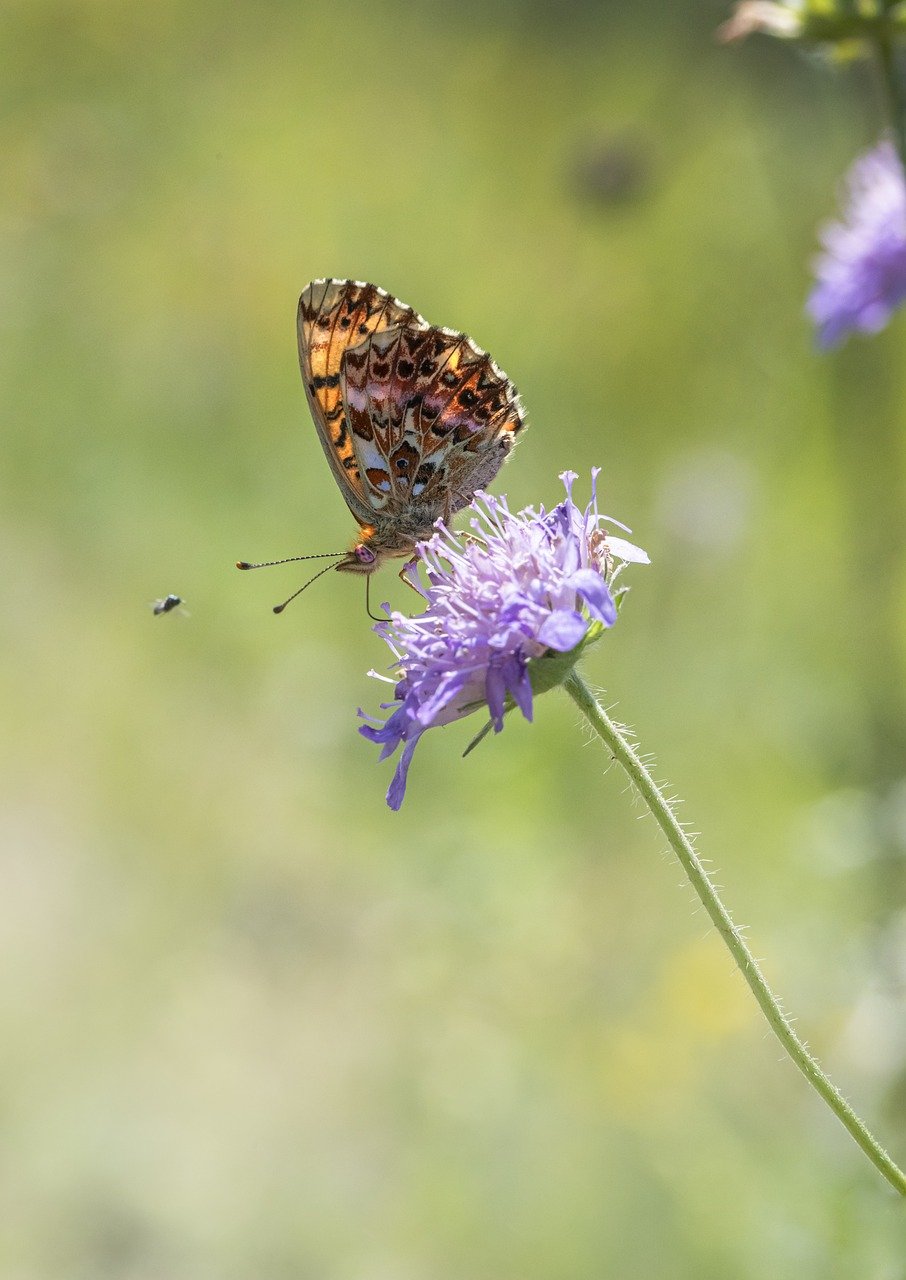The Titania’s Fritillary (Boloria titania), also known as the Pallas’ Fritillary, is a butterfly belonging to the family Nymphalidae. This species is known for its beautiful wing patterns and preference for specific habitats. Here’s an overview of Boloria titania:
Appearance:
- Size: The wingspan ranges from 38 to 46 millimeters.
- Coloration: The upper side of the wings is orange with black spots and wavy lines. The pattern is typical of fritillary butterflies, aiding in camouflage among flowers and vegetation.
- Undersides: The underside of the hindwings is orange with white and brown markings, providing excellent camouflage when the butterfly is at rest with closed wings.
Habitat:
- Preferred Habitats: Titania’s Fritillary favors moist meadows, marshy areas, and woodland clearings. It is often found in alpine and subalpine regions, up to altitudes of 2000 meters.
- Geographic Range: This butterfly is found across Europe and parts of Asia, including countries such as Austria, Switzerland, France, Germany, Scandinavia, and extending into Siberia.
Behavior:
- Feeding: Adults feed on nectar from various flowers, including thistles, dandelions, and other meadow flowers. They are often seen basking in the sun on open flowers or vegetation.
- Flight: They have a strong, swift flight but often stay close to the ground. They are active from late June to August, depending on the altitude and latitude of their habitat.
- Activity: Titania’s Fritillary is typically active during sunny weather, as it relies on warmth for its flight.
Life Cycle:
- Eggs: Females lay eggs singly on or near host plants. The eggs are tiny and round.
- Larvae: The caterpillars are black with yellowish stripes and covered in spiny hairs. They feed on various species of violets (Viola spp.), which are the primary host plants.
- Pupation: Pupation occurs in a loose cocoon among low vegetation or leaf litter. The chrysalis is mottled brown, providing camouflage.
- Adults: After pupation, adults emerge to continue the life cycle. In some regions, there may be a partial second generation.
Ecological Role:
- Pollination: As nectar feeders, these butterflies play a role in pollinating a variety of flowering plants.
- Food Web: Larvae and adults serve as prey for various predators, including birds, spiders, and other insects, contributing to the ecological balance.
Conservation Status:
- Population: Titania’s Fritillary is not currently considered threatened and is relatively common within its range.
- Threats: Habitat loss due to agricultural expansion, changes in land management, and climate change can impact local populations. Conservation efforts focus on preserving natural meadows and wetland habitats.
Interesting Facts:
- Adaptive Strategies: The butterfly’s coloration and pattern provide excellent camouflage, protecting it from predators.
- Habitat Specificity: This species’ preference for moist, flower-rich meadows and its reliance on specific host plants highlight the importance of habitat conservation.
- Range and Distribution: Titania’s Fritillary’s ability to inhabit both lowland and alpine regions demonstrates its adaptability to different environmental conditions.
In summary, Titania’s Fritillary (Boloria titania) is a beautiful and ecologically significant butterfly species found in moist meadows and alpine habitats across Europe and Asia. Its role in pollination and the food web underscores its importance in maintaining biodiversity. Conservation efforts are essential to protect this species from habitat loss and environmental changes.
Visited 837 times, 17 visit(s) today
Views: 1337
Subscribe to the newsletter:
